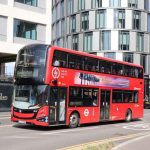CPT Policy Manager Alison Edwards examines the recently published National Bus Strategy and what more the government must do to help
Buses are a vital part of our country’s infrastructure. They connect people to work, school, leisure activities and essential services and have an important role to play in supporting economic growth and reducing social deprivation.
The publication of the National Bus Strategy represents an opportunity for a step change in bus use across England as we come out of lockdown, so we can build on the excellent services bus operators provide to millions of people.
Measures announced in the Strategy show that the government shares our ambitious plans to deliver better bus networks. To ensure that collaborative working between bus operators and local authorities can succeed, there must be targets for passenger growth and improved journey times to ensure accountability and a shared commitment to delivering better services for passengers.
The Greater Bristol Bus Network is a good example of successful collaborative working. Investments in transport corridors to speed up journey times, smart integrated ticketing, improved frequencies and quality, low-emission vehicles saw an increase in bus use of over 50% over a seven year period.
The restatement of the government’s commitment to funding for zero-emission (ZE) buses is a welcome first step in delivering the Prime Minister’s pledge to deliver 4,000 such vehicles and a boost for British bus manufacturers.
Nonetheless, the £120m Zero Emission Bus Regional Area (ZEBRA) scheme launched since the publication of the strategy does not go far enough and does not recognise the impact that the pandemic has had on operators’ abilities to invest in new vehicles.
The Confederation of Passenger Transport (CPT) will keep pushing for a scheme that provides greater support for investment in ZE vehicles so that the bus industry can continue to play its full role in achieving better air quality and reducing carbon emissions.
The Strategy confirmed that CBSSG funding will likely continue while social distancing remains in place. Government must not leave the bus behind in the social distancing review and must allow buses to reduce social distancing requirements in line with other venues and locations around the country. Buses will play a crucial role getting people back to towns and city centres, but if operators continue to run at reduced capacity while other areas of the economy can open, we are at risk of isolating people who rely on the bus to make their journeys.
The Strategy must now be matched by local delivery and consistent policy across government, with buses placed at the heart of transport networks. Government at a national and local level – working hand-in-hand with operators – must use this Strategy as an opportunity to make a real positive change to bus networks across the country.























